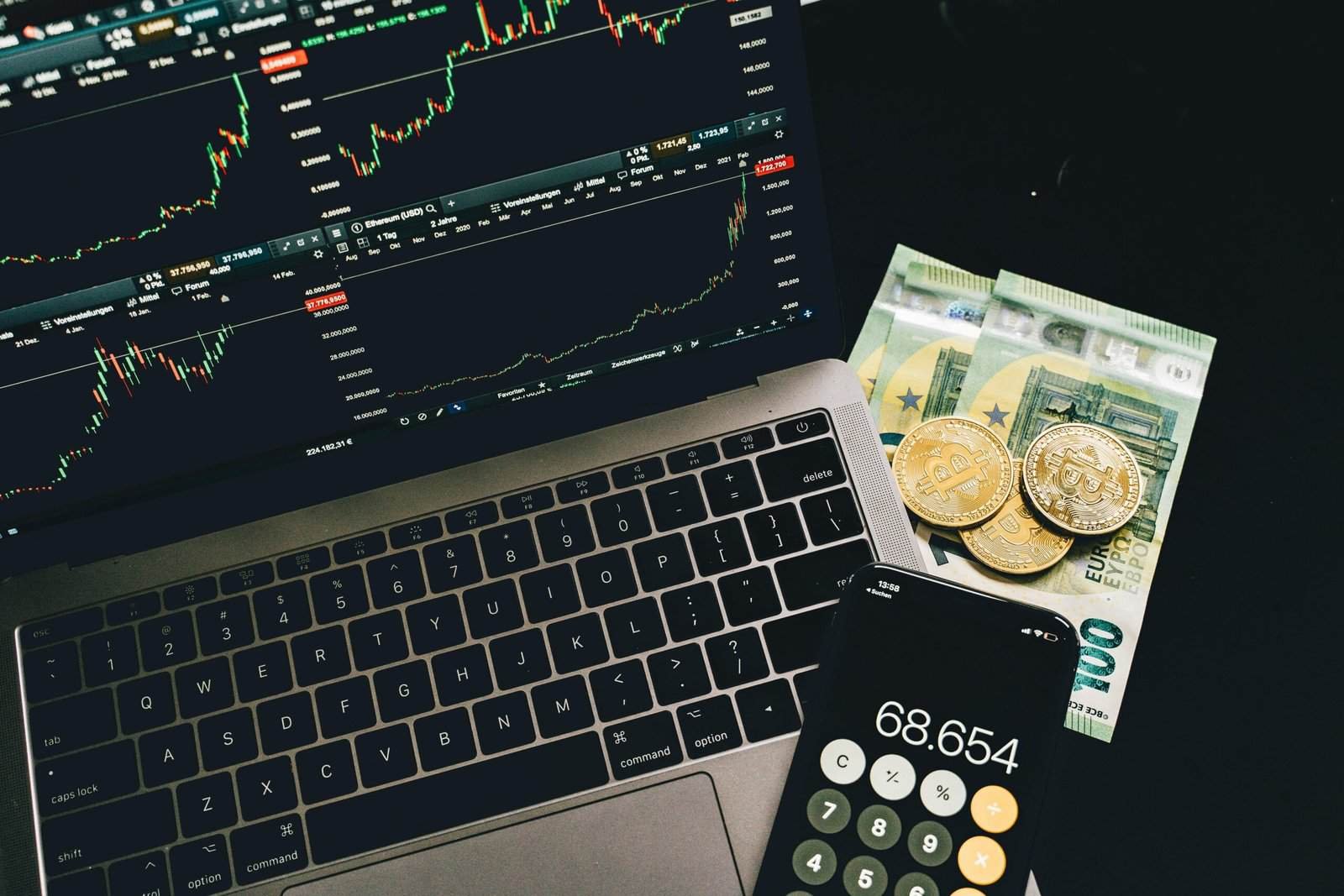Have you ever wondered how to keep your cryptocurrency safe while ensuring it’s easily accessible on the go? As digital currency becomes more mainstream, managing it effectively and securely has never been more important. A crypto mobile wallet offers a perfect blend of security and convenience, allowing you to handle all your crypto transactions at your fingertips. Whether you’re new to the world of virtual currencies or looking to switch to a more convenient mode of management, understanding how to use a crypto mobile wallet can make all the difference.
Understanding Crypto Mobile Wallets
Before getting into the nitty-gritty of how to use a crypto mobile wallet, it’s important to understand what it is. A crypto mobile wallet is essentially an application designed for smartphones and tablets which allows you to send, receive, and store cryptocurrency. Think of it like a bank app but for digital currency. It’s portable, convenient, and essential for anyone actively involved in cryptocurrency exchanges.
Why Use a Crypto Mobile Wallet?
There are several reasons why you might choose a mobile wallet over a desktop wallet or an exchange-based wallet. Mobility and accessibility are the most compelling reasons; you can manage your cryptocurrency anytime, anywhere, directly from your smartphone. This is especially convenient for frequent travelers or those who prefer conducting transactions on the move. Additionally, mobile wallets often have user-friendly interfaces, making them ideal for beginners.
The Technology Behind Crypto Mobile Wallets
Crypto mobile wallets can be classified as either hot wallets or cold wallets. Most mobile wallets fall under the hot wallet category, meaning they are connected to the internet and are used for everyday transactions. These wallets use secure technology like encryption, biometrics, and often two-factor authentication to protect your assets. Understanding this basic infrastructure can greatly enhance your confidence while using these applications.
Setting Up Your Crypto Mobile Wallet
Setting up a crypto mobile wallet is usually a straightforward process. However, the steps may vary slightly depending on the app you choose. Let’s walk through a generic setup process to get you started.
Choosing the Right Mobile Wallet
Selecting the right wallet is crucial and it should fit your needs and technical comfort level. Consider factors such as security features, the range of supported cryptocurrencies, user reviews, and ease of use. Some popular options include Trust Wallet, Coinbase Wallet, and Mycelium.
Creating Your Wallet Account
Once you’ve selected your wallet, the next step is to download the app from your device’s app store. Install it and follow the on-screen instructions to create a new wallet. This typically involves setting up a strong password and, in some cases, activating additional security features like biometrics.
Securely Backing Up Your Wallet
One of the most critical steps in setting up your wallet is backing it up. This usually involves writing down a 12- or 24-word recovery phrase provided by the app. Ensure you store this phrase in a secure location, as it is the only way to recover your wallet if you lose access to your mobile device.

Navigating Your Mobile Wallet
Once your wallet is set up, it’s time to explore its features. Familiarize yourself with the interface, which typically includes tabs for sending, receiving, and checking your transaction history. Each wallet may have unique features, so take some time to explore the menu options available.
Sending Cryptocurrency
To send cryptocurrency, you’ll need the recipient’s wallet address. This is a unique string of characters that identifies their wallet. Simply navigate to the send tab, enter the recipient’s address, specify the amount you want to send, and complete the transaction. Always double-check the address to avoid sending your assets to the wrong recipient.
Receiving Cryptocurrency
Receiving cryptocurrency through a mobile wallet is relatively simple. Navigate to the receive tab, and you will be provided with your wallet address and a corresponding QR code. Share this address or QR code with the sender. Once the transaction is confirmed on the blockchain, the funds will appear in your wallet.
Managing Transactions
Most wallets provide a feature to check your transaction history. This is where you can see all of your past transactions, whether incoming or outgoing. Keeping track of your crypto transactions can be helpful for financial management and tax reporting.
Security Best Practices
Even though mobile wallets are designed with security in mind, it is vital for you to take personal precautions to further secure your digital assets. Let’s discuss some important security best practices.
Keeping Your Wallet Updated
Software updates often include security patches and improvements. Always ensure your wallet app is up-to-date. This minimizes the risk of cybersecurity issues and ensures you have the latest features.
Using Two-Factor Authentication
While biometrics provide a layer of security, enabling two-factor authentication (2FA) adds another layer of protection. This means even if someone gains access to your phone, they would need another code, usually sent to another device or email, to access your wallet.
Avoiding Public Wi-Fi
Public Wi-Fi networks are often not secure, making them susceptible to hackers. Use a private, secure network whenever managing your cryptocurrency. If necessary, consider using a Virtual Private Network (VPN) to encrypt your internet connection on public networks.
Being Wary of Phishing Scams
Phishing scams continue to be a pervasive issue in the crypto space. Be cautious when clicking on links in emails or messages, and only download wallet software from trusted sources. Always double-check the authenticity of any notifications or instructions received regarding your wallet.

Troubleshooting Common Issues
Even with a sound understanding of your mobile wallet, you might encounter some issues. Here are some common problems and their solutions.
Wallet Not Synchronizing
Sometimes your wallet may have trouble synchronizing with the network. This can happen if your internet connection is unstable. Try troubleshooting your internet connection and restarting the app. If the problem persists, contacting customer support can provide further assistance.
Transaction Delays
Transactions may sometimes take longer to confirm due to network congestion. Patience is key here, but you can also check the transaction status using the transaction ID on a blockchain explorer for updates.
Forgotten Recovery Phrase
If you’ve misplaced your recovery phrase, there sadly isn’t much you can do as it is crucial for accessing your wallet. Always store it in a safe and accessible place to avoid this issue. Consider using a password manager to secure your recovery phrase digitally.
Advantages and Disadvantages of Crypto Mobile Wallets
Understanding the pros and cons of using a crypto mobile wallet will guide you to make an informed decision and optimize your user experience.
Table: Advantages and Disadvantages of Crypto Mobile Wallets
| Advantages | Disadvantages |
|---|---|
| Convenient and easily accessible | Being connected to the internet poses security risks |
| Usually user-friendly with an intuitive interface | Limited to smartphone capabilities |
| Often supports a wide range of cryptocurrencies | Vulnerable to hacking if proper precautions are not taken |
| Allows for real-time transactions | Loss of device can lead to loss of access |

Final Thoughts
Using a crypto mobile wallet is an excellent way to manage your digital assets conveniently while on the move. As with all financial tools, it is essential to consider both its benefits and risks. By choosing a suitable mobile wallet, setting it up securely, and knowing how to navigate its features, you can comfortably and safely manage your cryptocurrency. Always remember to stay updated on the latest security practices and technological advances to keep your assets protected.

